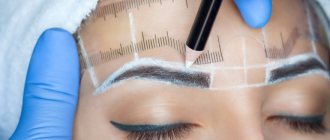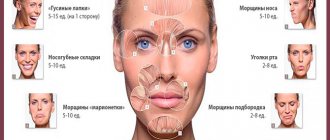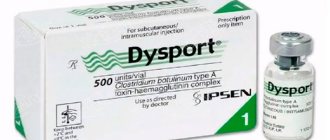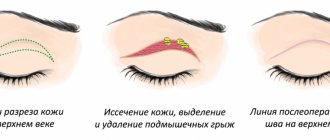The main goal of eyelid blepharoplasty is to rejuvenate the appearance and correct congenital and acquired eyelid defects. Mostly, patients over the age of forty resort to this procedure. Eyelid correction is more common among the female population, who, in pursuit of eternal youth, are ready not only for all kinds of cosmetic experiments, but also to go under the surgeon’s knife.
It is important to understand that eyelid correction is not able to stop skin aging, but only to minimize age-related manifestations, such as a hernia under the eyes, or the presence of excess tissue on the upper eyelids.
Blepharoplasty is a serious surgical operation, which, if done incorrectly, is fraught with serious complications.
The choice of a qualified plastic surgeon with experience in performing operations in this field is of great importance. The clinic where eyelid correction will be performed also plays a big role. Only with modern, modernized equipment is it possible to perform successful eyelid surgery.
In some cases, if the plastic surgeon is insufficiently qualified, errors may occur during the operation, which will lead to serious complications. In this case, a repeat operation will be required. Negative consequences are possible even when blepharoplasty is performed by the most experienced doctor; the outcome depends on the individual characteristics of the patient and the complexity of the procedure.
Women tend to perfect their appearance, so they are interested in whether it is possible to have blepharoplasty repeated, often for aesthetic purposes.
If the outcome of the first operation is positive and there are no serious complications, the next eyelid surgery is possible no earlier than five years after the previous one.
Repeat upper and lower blepharoplasty
Only after your attending physician has assessed the results of the first plastic surgery, can a decision be made to perform a second operation. After manipulation of the eyelids, at least a year must pass for the skin to be restored, the incisions to heal, and the tissues to come into place.
If the first operation was successful and you completely trust the doctor who performed the operation, you should also have a repeat procedure with him. Moreover, he is aware of the individual characteristics of your body and has all the necessary tests.
In the event of a surgeon’s mistake that leads to postoperative complications, it is worth finding another doctor and clinic where you can perform repeat blepharoplasty of the upper and lower eyelids.
The course of the operation is no different from the previous one. It will be necessary to retake all the necessary tests and conduct additional examinations that the doctor may prescribe. If contraindications are identified, the operation will be postponed. Even if there were no problems before the first plastic surgery, during the period between operations contraindications could arise that would prevent the correction. During the consultation, the doctor marks the surgical area, predicts the possible result, and selects the appropriate anesthesia.
Repeated blepharoplasty - how, when and why it is done
An eyelid lift is one of the most popular methods of facial rejuvenation, but, alas, it is not always possible to obtain the expected result. And even if everything went well, and the patient is completely satisfied with the outcome, sooner or later age will continue to advance.
Revision blepharoplasty is a surgical procedure that is performed:
- to correct the consequences of the primary operation if it was performed unsuccessfully and functional or aesthetic complications arose;
- or as a new independent correction, if a lot of time has passed since the previous one and little remains of the original anti-aging effect.
In what cases does it become necessary to correct something? Is it difficult? How much time should pass before a new visit to the surgeon? TecRussia.ru will help you understand the subtleties and nuances:
↑ Reasons for another operation
Medical indications for the second and subsequent blepharoplasties most often include:
- Ectropion or inversion of the lower eyelid is a defect due to which the eye is not able to close completely, which leads to drying out of the mucous membrane. This happens when removing an excessive amount of tissue or severe scar deformation.
- Rounding of the palpebral fissure (“fish eye”) can develop as a result of non-compliance with surgical technique, when an unreasonably large skin flap is excised, or due to inflammatory processes.
- Blepharoptosis (drooping of the upper eyelid) is a rare complication that occurs as a result of a technical error during surgery when the surgeon touches a nerve.
- Lagophthalmos is a syndrome characterized by incomplete closure of the eyelids. May occur due to excessive skin removal, damage to the orbicularis oculi muscle.
The most common unsatisfactory consequences of eyelid surgery, which do not threaten health, but require new surgical intervention to restore/improve facial aesthetics:
- Persistent asymmetry - the eyes look different due to the uneven location of the seams or due to disruption of the scarring process.
- Residual hernias, their recurrence - this occurs as a result of shortcomings of the surgeon or due to the individual predisposition of the patient’s body.
- Excessive removal of fat from the lower and/or upper eyelids - manifests itself in the form of areas of sunken skin, visually making the face unhealthy and haggard.
- Rough scars, if they are not caused by an individual tendency to hypertrophy, but do not respond well to conservative therapy.
If blepharoplasty is performed efficiently and the patient likes the result, then it is advisable to repeat it only after a long time, when new aesthetic indications appear, such as:
- “bags” under the eyes caused by stretching of the dermis;
- hernial protrusions;
- drooping, drooping eyelids, loss of tone and elasticity of the skin;
- other age-related changes in the periorbital region.
Usually this happens no earlier than after 8-10 years (in general, the upper eyelids can be operated on repeatedly, but the lower eyelids can be operated on only once in a lifetime, since excess skin practically does not form in this area. For more details, see the article “How many times can you do blepharoplasty and how to maintain its results for a long time")
↑ Features of re-correction and its differences from primary
At the preparatory stage:
- When there are no emergency medical indications, such as the inability to completely close the palpebral fissure, an assessment of the patient’s condition and repeated surgery (if necessary) are carried out only after all the swelling has subsided, the tissue has completely healed, and scars have formed. This usually takes from 6 months to 1 year.
- Skin deficiency can become a big problem: it is not always enough to correct the result of a previous intervention without causing new negative consequences and complications. Unfortunately, for this reason, surgeons often refuse surgery.
- Sometimes, instead of repeated eyelid surgery, the desired result can be achieved in other ways, for example, by lifting the forehead and eyebrows or the temporal area: in some cases, this helps to more effectively eliminate age-related changes. Here everything depends on the condition and individual features of the patient’s facial structure, so it is decided by the surgeon during a face-to-face consultation.
During the operation:
- If we are not talking about very minor corrections, corrective eyelid surgery lasts longer than primary surgery - about 2 hours versus 1-1.5, respectively. This is due to the more complex technique of its implementation.
- The surgeon tries to make all new incisions exactly according to the old ones: in this way you can not only minimize traces, but also improve the appearance of the scars (due to partial excision of scar tissue), if they were not very successful initially.
↑ How the operation is performed and what to expect after it
Repeated blepharoplasty, performed for aesthetic reasons (to “renew” the anti-aging effect) is practically no different from the primary one. If we are talking about eliminating complications, the surgeon’s technique and sequence of actions can be very different: it all depends on what determines the need for a new eyelid correction, what defects need to be eliminated, what previously existing defects need to be corrected. In the most general form, such operations are performed in accordance with the basic principles of reconstructive surgery:
- Understand what exactly led to the dysfunction or appearance of the upper or lower eyelids.
- Eliminate as much as possible the factors that caused these violations.
- If possible, repeat the original operation, this time without making any mistakes.
Recovery can also vary in terms of timing and severity. Of course, it is worth preparing for all the “joys” of surgical intervention: pain, swelling, the need to limit eye strain, etc. at least for the first 1-2 weeks. The surgeon who directly performed the operation will give specific instructions; if necessary, he will prescribe moisturizing drops, ointments and other drugs and/or procedures that will speed up rehabilitation and make it more comfortable.
- Unfortunately, with repeated surgery, any complications characteristic of surgical eyelid surgery cannot be excluded: both functional and aesthetic.
- How long does it take to have a new blepharoplasty and how long does the result last?
- How is the recovery period after lifting the upper and/or lower eyelids?
Indications for revision blepharoplasty
Factors for carrying out another operation may include:
- Asymmetry of the eyes;
- Patient dissatisfaction with the first operation;
- Scars;
- Unnaturalness of the face after blepharoplasty;
- Presence of other complications.
The doctor cannot accurately predict the result of the correction, especially if the operation was performed in conjunction with cheek or forehead lifting, or with other anti-aging procedures. It is impossible to know whether all wrinkles can be smoothed out after the first blepharoplasty.
In this regard, after evaluating the operation by a plastic surgeon, he may decide to perform a repeat procedure.
The effect of the operation lasts up to ten years. After this period, the skin may sag, additional wrinkles or bags under the eyes may form.
Recovery
Rehabilitation usually involves pain and swelling. To alleviate the condition, use:
- compresses (immediately after surgery - cold),
- analgesics,
- moisturizing eye drops,
- ointments as prescribed by the surgeon.
If necessary, the doctor develops a special rehabilitation program, which may include a course of physiotherapy (microcurrents and other procedures).
After repeated blepharoplasty, it is necessary to strictly follow all the surgeon’s recommendations, which are usually aimed at accelerating healing and preventing complications.
Rehabilitation after reoperation
Just like the first operation, the second can be performed under general or local anesthesia. The doctor chooses the method of pain relief, depending on the complexity of the operation and the individual characteristics of the patient. Most often, the same anesthesia is used as during the first blepharoplasty. The doctor makes the necessary incisions along the eyelash line, in the natural crease of the upper eyelids, or along the mucous membrane of the lower eyelid.
During surgery, the doctor excises excess skin, removes connective or scar tissue, and removes excess fat. After the operation, the skin is stitched with regular or self-absorbable threads.
In the case of repeated blepharoplasty, the problem may be a lack of skin, which will not allow the edges to be pulled together to form a high-quality seam. Scars from a previous operation can significantly complicate the operation.
Preparing for surgery
Repeated blepharoplasty is allowed to be performed only after complete tissue healing and scar formation. Correction is usually carried out 1 year or more after the first operation. More careful preparation is required before surgery. In addition to a standard medical examination, the surgeon needs to diagnose the type, extent and possible cause of the complication. If the first plastic surgery was performed by another doctor, the technical features of the surgical intervention and possible errors should be determined.
Corrective surgery usually takes longer and is performed under anesthesia. The doctor selects treatment tactics in accordance with the indications and gives preference to the least traumatic methods. If possible, skin incisions are made along the original scars with their excision.
Rehabilitation after blepharoplasty
For a successful postoperative period, it is very important to strictly follow all the doctor’s recommendations and follow the visit schedule. In the case of local anesthesia, the patient after the operation, if he is feeling normally, can go home. However, it is important that you are accompanied by someone from your family and friends.
Approximately four days after surgery, the stitches can be removed. At first, you will need complete rest; it is advisable not to go to work, especially if it requires physical and emotional stress. Moreover, after blepharoplasty, swelling and bruising are possible.
It is recommended to stop watching TV, working at the computer, and reading books during the rehabilitation period. You should completely stop smoking and drinking alcohol.
Rehabilitation process and photos after blepharoplasty by day
Recovery after eyelid surgery can last up to 12 weeks. This directly depends on the individual characteristics of the patient’s body, the rate of tissue regeneration, age, general health, and predisposition to edema. However, you can return to your normal rhythm of life after a month.
Let's take a closer look at the healing process of sutures after blepharoplasty:
1 day . After plastic surgery, if local anesthesia was used, the patient can go home almost immediately, accompanied by someone close to him. Already at home, you may experience unpleasant sensations in the form of swelling and soreness of the eyelids. Cold compresses will come to the rescue. The doctor can prescribe painkillers if necessary;
2-3 day . Double vision and photophobia are common during this period. To relieve discomfort, the following are suitable: eye exercises, antiseptic drops (only as prescribed by a doctor). During this period, the patient can already bathe and wash his hair, avoiding getting shampoo and water into the eye area. It is necessary to reduce physical activity as much as possible and try not to show unnecessary emotionality. On the third day, you can wash your face, still avoiding the surgical area. You should only sleep on your back, with the head of the bed raised. It is important not to touch the affected area at all: do not touch, do not rub, do not pull back your eyelids.
4-5 day . Most often, at this time the swelling begins to gradually subside. Unpleasant sensations in the eyes also decrease. This period is when the stitches are removed, so you can read a little. It is still forbidden to bend over sharply and strain.
Day 6 There are still traces of hematomas, there is practically no swelling. At the clinic where the operation was performed, antiseptic stickers and patches, if applied, will be removed.
Day 7 There is practically no swelling; in rare cases, a slight swelling remains. During this period, you should avoid being in direct sunlight; it is advisable to wear a wide-brimmed hat and sunglasses. You can return to the usual rhythm of life.
8-10 day . For women, this period is marked by the opportunity to use decorative cosmetics.
11-14 days . You can already really see the first results of blepharoplasty. You can engage in simple, non-traumatic sports and wear contact lenses.
15-20 day . In rare cases, asymmetry may appear; this is due to residual swelling after surgery.
40-60 day . Scars cannot be seen with the naked eye. At this point, rehabilitation is coming to an end.
Let's now look at everything described above in the photo, day by day after upper eyelid blepharoplasty.
Examination before blepharoplasty
Before blepharoplasty, it is necessary to undergo an examination to determine contraindications to surgery. Mandatory manipulations include:
- general blood and urine tests,
- blood chemistry,
- coagulogram - test for blood clotting,
- tests for HIV, syphilis, hepatitis B and C,
- ECG.
At the VIP Academy, patients must be examined by an ophthalmologist, because blepharoplasty is contraindicated for keratitis, blepharitis, glaucoma, and cataracts.
Definition of contraindications
First of all, the doctor carefully interviews the patient. He determines whether he has diseases of the heart, kidneys, liver, blood vessels, blood, respiratory and nervous systems, and whether he has allergies to medications. The hereditary factor plays an important role, so the specialist is interested in diseases that close relatives suffered from.
If the patient agrees that he has diseases of his organs and systems, or the doctor suspects a previously undetected pathology, the patient must be thoroughly examined. If there are no serious deviations that could interfere with blepharoplasty, then you can prepare for the operation itself.
An ophthalmological history is also determined. Eye diseases may be a contraindication to surgery. So, the surgeon rarely allows the patient to undergo surgery if he has dry eye syndrome, this can cause complications and lead to an unsatisfactory result.
But this is not a critical contraindication - if the disease is cured, surgery will be scheduled. In the presence of chronic eye diseases, the prognosis is less favorable - blepharoplasty is contraindicated for life in such patients.
The surgeon needs to know about previous eye surgeries, including vision correction. If repeated blepharoplasty is planned, then complete information about the previous intervention will help the surgeon competently plan the operation and anticipate possible complications. In many situations, examination by an ophthalmologist, psychologist, or surgeon before surgery is considered mandatory.
We recommend: How is transconjunctival upper eyelid blepharoplasty performed?
Planning the operation
If everything is fine with the tests, then preparations for blepharoplasty take place. The surgeon evaluates the patient’s appearance, analyzes the shape of the eyes and eyebrows, the condition of the muscles, the amount of excess skin and fatty tissue, identifies the severity of facial wrinkles and tells the patient what results can be obtained using a particular blepharoplasty technique.
He should talk about all the methods, their advantages and disadvantages. But, taking into account the patient’s age, his wishes, the condition of the tissues, individual structural features, and budget, the surgeon must recommend the most suitable method. After this, he explains how the operation and rehabilitation period will proceed, and what complications may arise.
It is imperative to clarify all financial issues before surgery, so that there are no questions or disagreements later. To track all changes in appearance, the surgeon takes photographs of the patient from different angles. Many clinics offer computer modeling. Thus, you can see your appearance as close as possible to the result of the operation.
We recommend: How is forehead blepharoplasty performed?
Color correction
Since the stains lighten over time, the need for a dense coating disappears. You can use cosmetics that imitate the natural color of the skin. These are concealers with color-correcting pigments that are more translucent than a solid base. Their color should be chosen in such a way as to tint the spot to match the normal, natural color of the skin.
For example, you can disguise redness with a green tone, yellowness with blue or blue, cyanosis or violet with yellow tones. Color-correcting concealers should be applied by gently patting with your fingertips or using a sponge. The makeup is completed with a foundation that matches the skin. It is better to use a clean sponge or sponge.
We recommend: When can you drink alcohol after blepharoplasty?
Lower blepharoplasty: prices
“How much does lower eyelid blepharoplasty cost?” - this question worries anyone who is planning to change their appearance with an injection or a scalpel.
Only the person who will perform it—a plastic surgeon or cosmetologist—can name the exact cost of lower blepharoplasty.
Each operation is unique, since the initial data of the patients are completely different. The final cost of the operation is influenced by the expected amount of work, the type and drug for anesthesia, the drug and its volume for injection. Approximate cost table for blepharoplasty :
| Injection | from RUB 5,000 per procedure |
| Classical | from 35,000 rub. |
| Laser | from 50,000 rub. |
| Transconjunctival | from 60,000 rub. |
What will be the results?
Age negatively affects the condition of the skin of the face, and in the eyelid area, where particularly sensitive and delicate skin is located, it is especially pronounced. The skin of the upper eyelids sags, due to which a person develops not only aesthetic complexes, but also problems with vision. A common cause of swelling of the eyelids are hernias, which create the visual impression of swelling and bags under the eyes. Blepharoplasty will help get rid of skin folds under the lower eyelids and eliminate excess tissue and skin. However, it is worth noting that it is not always possible to get rid of the so-called “crow’s feet”.
Possible complications
Blepharoplasty surgery can go perfectly, but after it complications may develop due to various reasons. Therefore, it is extremely important for the patient to follow all the doctor’s recommendations.
Possible consequences of lower eyelid blepharoplasty:
- Swelling is a normal reaction of the body in the first 5 days for transconjunctival and 10 days for percutaneous blepharoplasty. But after this period, swelling should not appear; it will indicate the addition of an infection.
- A keloid scar is a strong growth of connective tissue at the site of the incision. Keloid scars can form due to inaccurate joining of the edges of the wound or due to insufficient elasticity of the skin. Can be polished with laser.
- Eversion of the lower eyelid is a condition in which the eyeball is partially not covered by the eyelids; they do not close. Occurs due to excessive excision of the skin. The consequence of lower eyelid inversion is constant watery eyes, dryness, burning, itching and pain in the eye.
- Hematoma - normally, bruises after blepharoplasty disappear within 1-2 weeks. But if a large number of capillaries or large vessels are damaged, a permanent hematoma can form. Types of hematomas: Subcutaneous - up to 1.5 cm, goes away on its own, in rare cases, removal of the contents is required.
- Tense - differs in size (from 1.5 cm). Repeated surgery and suturing of the damaged vessel are often required.
- Retrobulbar - characterized by abundant accumulation of blood behind the eyeball, constant dull pain and protrusion of the eye. A very dangerous condition that can affect vision. Consultation with an ophthalmologist, preferably a surgeon, is necessary.
Some complications arise due to the actions of the patient, others due to the fault of the surgeon. Signs that blepharoplasty was performed poorly: inversion of the lower eyelid, tense or retrobulbar hematoma.
Types of lower eyelid surgery
There are two types of lower eyelid surgery:
- Non-surgical blepharoplasty.
- Surgical blepharoplasty.
A non-surgical option is blepharoplasty of the lower eyelids without incisions, through injection of drugs. A minimally invasive procedure that allows you to quickly achieve the desired effect, while minimally damaging the skin around the eyes.
The effect after injections lasts from 6 months to 2 years!
Non-surgical plastic surgery of the lower eyelids is performed by a qualified cosmetologist using injections of cosmetic preparations under the upper layer of skin of the lower eyelid. The composition fills the space between tissues, eliminating wrinkles and getting rid of deep dark circles under the eyes. If injection blepharoplasty of the lower eyelid is performed, then complications after it are minimal. In extremely rare cases, an undesirable reaction to the drug occurs.
Surgical blepharoplasty is a complex of surgical interventions performed by a professional plastic surgeon. Surgical lower eyelid surgery has a more lasting effect compared to a non-surgical procedure. Using the surgical method, various age-related changes are eliminated, for example:
- Dark blue circles.
- Stretching of the skin of the lower eyelid.
- Bags under the eyes (hernias).
- Drooping of the outer corner of the eye.
During surgical blepharoplasty, there are several ways to make incisions. During the preoperative consultation, the plastic surgeon tells the patient about the sequence of the procedure. Including how the incision will be made. There are the following types of eyelid surgery:
- Blepharoplasty of the lower eyelids is classic - tissue dissection is performed a few millimeters below the edge of the eyelid. As the operation progresses, the fatty hernias that form the bags are removed, as well as the stretched skin is excised. Then a barely noticeable intradermal suture is applied. After removing the suture, the incision line is masked in natural recesses.
- Lower transconjunctival blepharoplasty - the incision is made along the mucous edge of the inner side of the lower eyelid (along the conjunctiva). This avoids a scar after the incision. With transconjunctival blepharoplasty, it is impossible to excise excess skin, so this type of operation is prescribed only for the correction of bulging hernias and circles under the eyes.
An ordinary scalpel or a special high-frequency laser can be used to make the cut.
General recommendations
Immediately after correction, a bandage is applied to the affected area. The patient experiences swelling and cyanosis, which increases in the first 3 days, after which it goes away. To speed up the recovery process, doctors advise monitoring your diet and regimen:
- ensure complete peace of mind on the first day (do not overexert yourself, do not be nervous);
- sleeping on your back with a large pillow under your head will reduce swelling;
- follow a diet - give up smoked, fatty, salty foods;
- protect your skin from the sun - do not leave the house or wear sunglasses;
- follow a daily routine - sleep 8 hours a day, go to bed at 22:00;
- provide peace to the eyes - read less, watch TV, work on the computer;
- take any medications after consulting your doctor. It generally prohibits the use of drugs that reduce the clotting process;
- You should not bend over sharply or turn your head, as in these situations the pressure on the eyes increases.
We recommend: When can you wear makeup after blepharoplasty?











